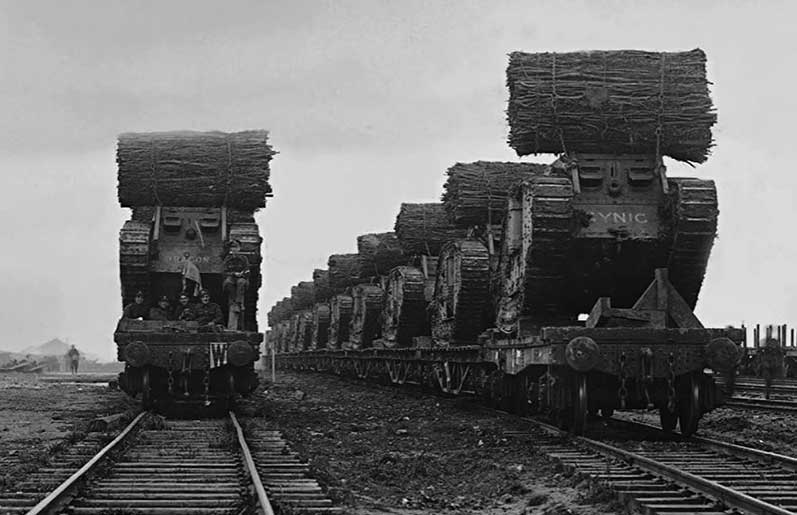Commanders!
In this episode of "Inside the Tanks," Richard "The Challenger" Cutland goes back to World War I with an in-depth examination of the first mass-produced battle tank, the British Mark IV. The Mark VI played a key role in the Battle of Cambrai, so to commemorate the anniversary of the battle on November 20, we are taking a close look at this iconic vehicle. Check out the operating conditions for the vehicle's eight-man crew, discover what it took to run this 28-ton behemoth with a top speed of 6 km/h, and learn how it adapted to the challenging terrain of trench warfare.
The Battle of Cambrai
Cambrai, a city in northern France, has secured its place in the history of tank warfare. Widely considered the site of the first major tank offensive, the Battle of Cambrai, which took place from November to December of 1917, showed the potential of these armored vehicles. This was the first time that tanks were used in unison as a concentrated force, but they also proved effective when coordinated with aircraft, artillery, logistics, infantry, and other forces.
This battle carries another historical footnote: In April 1918, a Mark IV engaged in the first one-on-one (tank-vs-tank) clash with a German A7V Nixe tank—and emerged victorious.
As an ironic testament to the tank's durability, the Germans operated more captured Mark IV tanks than their own A7V tanks.
 Mark IV tanks carrying fascines to help cross trenches.
Mark IV tanks carrying fascines to help cross trenches.  A Mark IV's eight-person crew had to operate the vehicle in near darkness and extreme heat.
A Mark IV's eight-person crew had to operate the vehicle in near darkness and extreme heat. Left image: Mark IV tanks carrying fascines. Right image: A Mark IV and crew.
Tanks in Trenches
In early trench warfare, enemy defenses, such as barbed wire and other obstacles, were easily overcome by the steel treads of the tanks. However, despite the tank's offensive potential when partnered with other forces, Germany developed a novel way to counter the threat. Following engagements with Mark I tanks in 1916, they widened their trenches to inhibit the machined advances. The obvious solution for the British would have been to lengthen their tanks, but instead, they chose to shorten them. In fact, the Mark IV (8 m) was almost 2 meters shorter than the Mark I (9.9 m).
Future developments for the tanks were inspired by glimpses into the past. Engineers looked to medieval knights crossing moats or defensive ditches—similar to trenches—and found they used bundles of tree branches bound together to cross these enemy fortifications. When the British employed this technique during the First World War, these bundles were referred to as fascines.
Rails were fitted to the Mark IV tanks and the fascines were loaded on top. As they reached the German trenches, the securing straps were released by the crew inside the tank, and the fascines rolled into the trenches. With a number of tanks doing this, they could fill the trenches and allow the vehicles to cross. Fascines are still used by tanks today, although with different materials, such as plastic drainpipes.
Head to The Challenger's Facebook page for a regular dose of epic tank videos and stories. And, of course, don't forget to subscribe to our YouTube channel, if you haven't done so already!
Roll Out!

